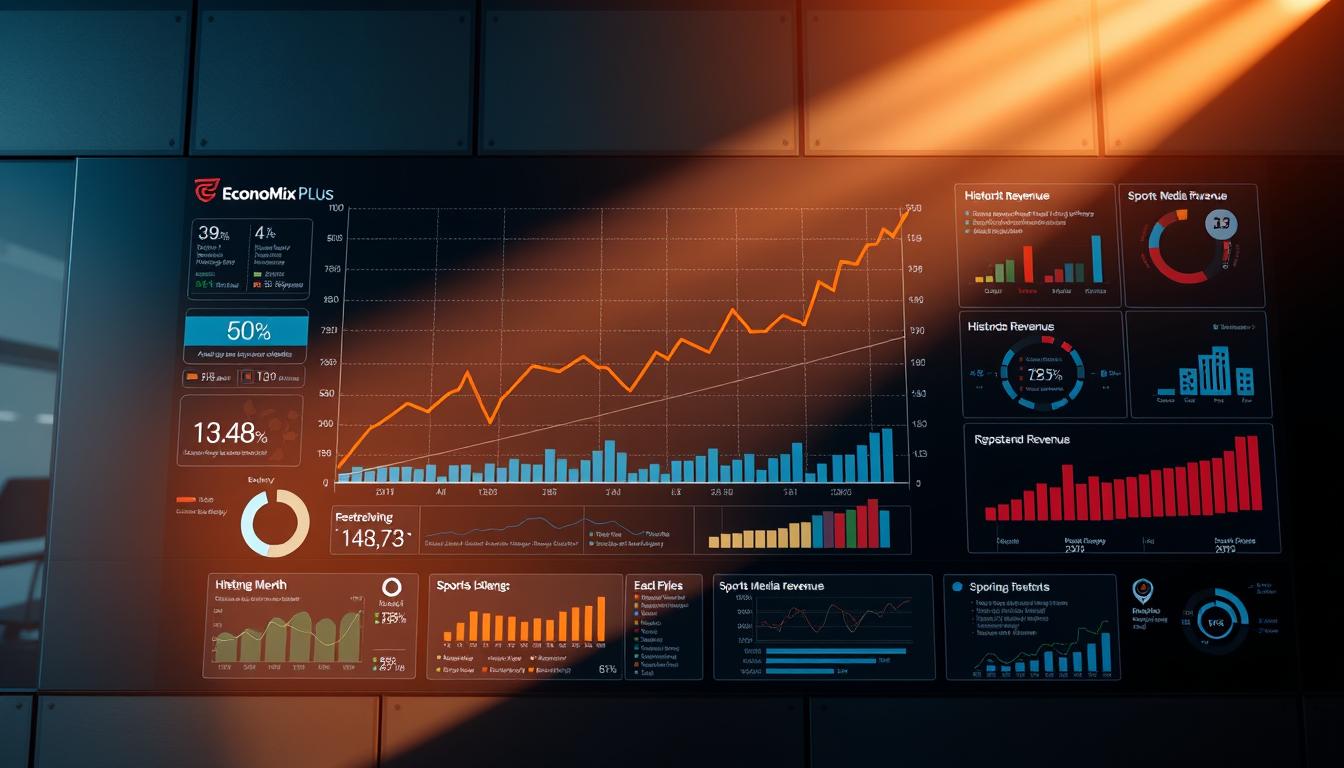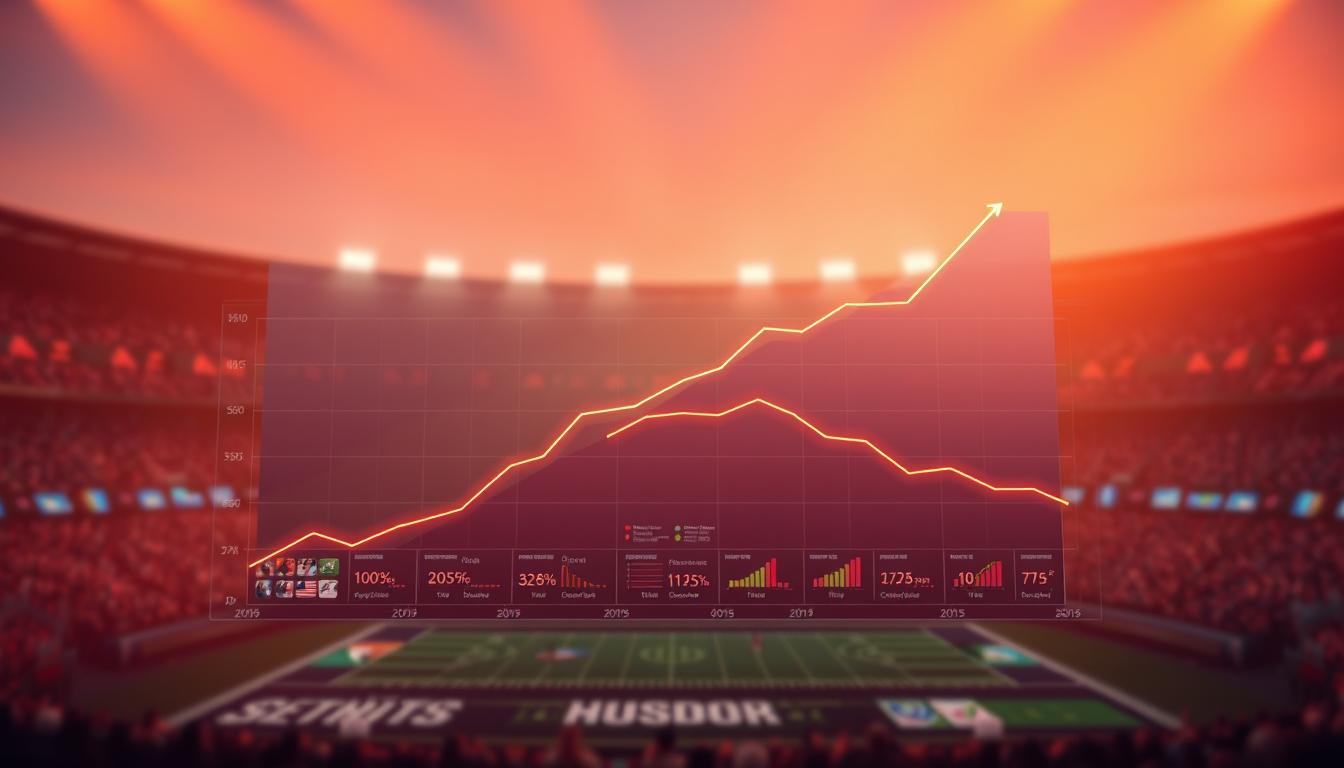In 2023, global television contracts for live events reached a staggering $62.4 billion – enough to buy every NFL team twice over. This explosion traces back to 1993, when Rupert Murdoch’s Fox Network wrote a historic $1.58 billion check to secure NFL rights, reshaping how leagues monetize their audiences.
Traditional networks like Disney (ESPN) and Comcast quickly doubled down, turning games into prime-time spectacles. Fox Corp. and Paramount later joined, using live matches to anchor advertising empires. But the real shift came when tech giants entered the arena: Amazon’s $1 billion/year Thursday Night Football deal and Apple’s MLS streaming partnership signaled a new era.
Fans now access content through 7+ major platforms, from cable to TikTok highlights. Leagues leverage this competition, with NBA media revenue jumping 180% since 2014. The result? Teams earn more from broadcast deals than ticket sales, while viewers enjoy unprecedented access – if they can keep up with the subscriptions.
Key Takeaways
- Global media rights for live events now exceed $62 billion annually
- Fox’s 1993 NFL deal pioneered modern rights valuation strategies
- Traditional networks spend billions to retain exclusive content
- Streaming services account for 35% of recent rights acquisitions
- Audience fragmentation drives innovation in content delivery
The Evolution of Sports Broadcasting: From Inception to a Goldmine
Radio broadcasts in the 1920s first connected fans to live action, but television transformed everything. By 1958, CBS paid $50,000 for NFL Championship rights – a fraction of today’s deals, yet revolutionary for its time.
Pioneering Agreements That Changed the Game
Rupert Murdoch’s 1993 gamble reshaped media economics. Fox Network’s $1.58 billion NFL contract proved live events could anchor entire networks. This deal became the blueprint, showing leagues how to monetize their audiences beyond stadium gates.
Television’s Dominance and Viewer Habits
Color broadcasts in the 1960s made games must-see events. ABC’s Monday Night Football debut in 1970 created appointment viewing, boosting ad rates. Networks soon competed fiercely:
- NBC’s $401 million MLB deal (1989)
- ESPN’s $895 million NBA contract (1998)
These agreements taught leagues to package content across multiple platforms. Today’s media rights combine live TV, streaming, and social media highlights – a far cry from single-network deals of the past.
Key Moments That Shaped the Industry
A single contract in 1993 permanently altered media economics. Fox Network’s $1.58 billion NFL agreement demonstrated live games could sustain entire networks. This watershed moment taught leagues to treat content as multi-platform assets rather than stadium-bound events.
Influential Deals and Their Impact
Amazon’s $13 billion NFL Thursday Night Football acquisition in 2022 shattered previous benchmarks. Streaming services now control 35% of major contracts, compared to 3% in 2010. League revenues tell the story:
| League | 1990s Rights Value | 2020s Rights Value | Growth |
|---|---|---|---|
| NFL | $4.3 billion | $113 billion | 2,528% |
| NBA | $660 million | $24 billion | 3,536% |
| NHL | $155 million | $4.3 billion | 2,674% |
ESPN’s 2012 MLB Sunday Night showcase proved regional games could attract national audiences. Apple’s 10-year MLS streaming partnership further blurred lines between traditional and digital media. Fans now expect 4K broadcasts with real-time stats – features born from bidding wars between tech giants and networks.
“These deals transformed teams from local franchises into global content factories,” noted one league executive.
Viewing habits shifted dramatically. Where families once gathered around single TV broadcasts, 63% of fans now watch highlights across 3+ platforms daily. This fragmentation drives innovation, with leagues offering VR experiences and TikTok-ready clips to maintain audience reach.
How Sports Broadcasting Rights Became a Goldmine
Decades of strategic negotiations transformed live games into financial juggernauts. Fox’s 1993 NFL partnership marked a turning point, proving long-term contracts could stabilize revenue streams. Networks began extending deals from four to eight years, locking in premium content while leagues secured predictable income.

The NFL’s media value skyrocketed 7,100% since 1993, reaching $113 billion in current contracts. This growth pattern repeats across leagues:
- NBA’s 2016 deal tripled its annual payout to $2.6 billion
- MLB extended agreements through 2028 for $12 billion
- NHL’s latest contract doubled its previous earnings
Broadcasters adapted their strategies to match. CBS and NBC now split NFL Sunday games, paying $2 billion annually each. ESPN’s 2006 Monday Night Football renewal introduced streaming rights clauses – a concept later adopted by Amazon and Apple.
“Lengthier contracts allow networks to amortize costs while building audience loyalty,” explains a former league negotiator.
Modern agreements bundle international distribution, mobile highlights, and betting data. This multi-platform approach helped the Premier League increase its U.S. media value by 300% since 2016. Teams now receive 58% of their income from broadcast partnerships, compared to 22% in the 1990s.
Digital Disruption and the Changing Landscape of Sports Media
Apple’s $2.5 billion MLS streaming partnership shattered industry norms, proving digital platforms could rival legacy networks. This seismic shift reflects broader changes: 63% of U.S. households now access live games through streaming services, up from 22% in 2018. Traditional cable subscriptions have plummeted 31% since 2020, forcing networks to adapt or risk obsolescence.

Shift from Linear TV to Digital Platforms
ESPN’s transition to ESPN+ exemplifies the pivot to digital-first strategies. Their $4 billion annual spend on streaming rights now matches traditional TV investments. Key developments include:
- Amazon’s 11-year $13 billion NFL Thursday Night Football exclusivity deal
- 40% of Premier League viewers using app-based multi-camera angles
- YouTube TV securing Sunday Ticket rights for $2 billion/year
These moves reflect viewer demands: 78% prefer on-demand replays over scheduled broadcasts. Networks bundle rights across platforms, letting fans watch highlights on Twitter while streaming full games elsewhere.
Engaging Younger Audiences Online
Gen Z viewers spend 71% less time watching full games than older demographics. To captivate this crowd, leagues deploy:
- NBA’s TikTok highlights reaching 8.3 billion views quarterly
- VR experiences letting fans “sit” courtside via Meta Quest headsets
- Interactive broadcasts with real-time stats overlays
“Young fans want snackable content they can share instantly,” notes a streaming platform executive. “Full games are now background noise to their curated highlight reels.”
This shift creates new revenue streams. Sponsors pay premiums for integrations in short-form clips, while augmented reality features drive 23% longer engagement per session.
Revenue Streams and Business Models in Sports Broadcasting
Modern sports media thrives on diversified income channels. Networks blend traditional advertising with digital partnerships, creating hybrid monetization systems. This evolution responds to shifting viewer habits and tech advancements.

Ad Revenues and Sponsorship Strategies
Television commercials remain vital, but digital ads now drive growth. ESPN’s hybrid model combines 30-second TV spots with targeted mobile banners. Brands pay premiums for:
- In-game integrations (virtual billboards)
- Social media highlight sponsorships
- Exclusive streaming platform deals
Dynamic ad insertion boosts earnings. Networks customize commercials based on viewer location and device. During March Madness, CBS sold 12% more ads this way versus fixed placements.
Innovative Contract Structures
Revenue-sharing deals now dominate negotiations. Amazon’s NFL contract includes bonuses if viewership surpasses 15 million per game. Key developments:
| Model | Traditional Approach | Modern Adaptation |
|---|---|---|
| Duration | 4-year fixed fees | 7-10 years with inflation clauses |
| Payment | Flat annual rates | Base + performance incentives |
| Rights | Exclusive TV | Multi-platform bundles |
Leagues benefit from flexible agreements. The NBA’s YouTube TV partnership shares ad profits 50/50 – a first for major media deals. This approach increased league digital revenue by 41% in two years.
“Hybrid contracts let us reward partners while maintaining financial stability,” explains a league CFO.
Networks now allocate 35% of budgets to streaming rights, up from 8% in 2015. This shift balances declining cable subscriptions with growing mobile viewership.
Case Studies: NFL, NBA, and Other Leagues’ Breakthrough Deals
Major leagues have rewritten media playbooks through landmark agreements. The NFL’s $113 billion television package spans 11 years, locking in partnerships with CBS, Fox, and Amazon through 2033. This deal guarantees each team $400 million annually – more than most franchises generated total in 2010.
NFL’s Mega Contracts and Their Legacy
Fox’s 2022 renewal at $2.2 billion/year set new benchmarks for linear TV. But Amazon’s exclusive streaming rights proved equally impactful, attracting 13% new Prime subscribers during its first season. These contracts created ripple effects:
- Local blackout rules eliminated in 70% of markets
- Thursday Night Football viewership up 22% across platforms
- Merchandise sales spiked 18% post-deal announcements
NBA’s Expanding Media Partnerships
Warner Bros. Discovery and Disney’s $24 billion deal lets fans watch games on TNT, ESPN, and Max simultaneously. League Pass subscriptions jumped 41% after adding mobile-only tiers. Commissioner Adam Silver noted: “Cross-platform access isn’t optional – it’s what today’s audience demands.”
Emerging Leagues and Niche Market Opportunities
MLS’s Apple TV partnership demonstrates digital-first potential. Viewership tripled in Year One, with 63% under age 35, showcasing a significant shift in how younger audiences engage with sports content. This demographic trend is critical, as it indicates that traditional viewing habits are evolving, and platforms like Apple TV are effectively capturing the attention of a generation that prefers on-demand access.
Furthermore, NCAA now streams 15+ sports on ESPN+, monetizing previously untapped events, allowing fans to enjoy a wider array of competitions beyond the mainstream. This expansion not only increases visibility for less popular sports but also enhances overall fan engagement and loyalty. Even pickleball secured $75 million in media rights – proof that niche markets can thrive, reflecting a broader trend where unconventional sports are finding their footing in the media landscape and attracting significant investment.
Conclusion
As technology evolves, so does the way we consume live sports, creating unprecedented financial opportunities. Historic deals like Fox’s 1993 NFL agreement laid groundwork for today’s $62.4 billion media rights industry, where streaming services now compete with legacy networks for exclusive content.
Digital platforms have redefined fan engagement, with 63% of viewers using multiple devices to watch highlights and full games. Leagues capitalize on this shift through hybrid contracts – the NFL’s $113 billion package and Apple’s MLS partnership demonstrate how flexibility drives revenue.
Three developments shape the future: dynamic ad targeting, cross-platform bundles, and Gen Z’s demand for shareable clips. Broadcasters blending these elements see 41% faster revenue growth than traditional models. As virtual reality and real-time stats become standard, adaptability remains key to maintaining audience loyalty.
The industry’s next chapter will reward those merging cutting-edge tech with fan-first experiences. Teams and networks investing in personalized content delivery – from TikTok snippets to VR arenas – will dominate the evolving media landscape.
FAQ
▶
▶
▶
▶
▶
▶
▶














